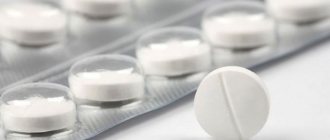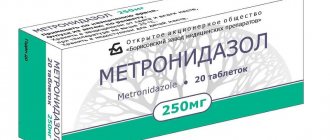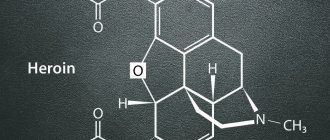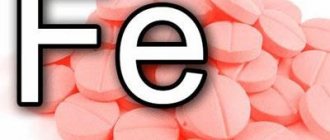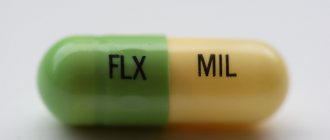Vitamins are advertised as extremely beneficial substances for the body, without which it cannot function normally - and this is indeed true. However, there is also the other side of the coin: an excess of vitamins is just as harmful as their deficiency. Even the term “harmless overdose” will not be entirely appropriate here: after all, even in the absence of negative effects, the body spends its resources on processing the substances entering it and eliminating them.
What is hypervitaminosis? This is an excess of vitamins in the body and the body’s reaction to such a load. Man is a very harmonious system, everything in it is balanced and adjusted to the smallest nuances. Therefore, when we try to roughly influence this perfect “construction,” it deteriorates: it gets injured, gets sick, and sometimes it can even die.
Everything is good in moderation - this is the correct principle of vitaminization. Therefore, it is important to very carefully read the annotations for vitamin preparations and complexes, strictly follow the recommendations of the doctor prescribing vitamins to you, and not try to take the initiative by prescribing “maintenance therapy” yourself: without knowledge about the compatibility and characteristics of the effects of vitamins, you can easily do more harm yourself rather than help.
What is hypervitaminosis: its danger
Hypervitaminosis is an excess of one or another group of vitamins in the human body. Such a diagnosis can lead not only to organ damage, but also to poisoning. The main reason for the increased amount of certain substances in the blood, according to experts, is their uncontrolled intake.
Many believe that hypervitaminosis can be obtained even while taking a particular product saturated with this substance. This is wrong!
According to statistics, overdose of B vitamins is diagnosed in 70% of cases in children under 7 years of age. This is because parents are diligently trying to improve the condition of the baby’s immune system. In addition, most vitamins, when in excess in the body, are not accompanied by pronounced symptoms of hypervitaminosis.
Restoration of the body
In mild and moderate forms of overdose, treatment of the victim at home is allowed - general strengthening agents, bed rest, diet, as well as diuretics and laxatives are used.
In case of severe poisoning with B vitamins in the presence of an acute pathological condition, the patient is redirected to the hospital and placed in the intensive care unit.
A specific treatment procedure is prescribed by a specialized specialist. The main directions are support of basic vital signs, symptomatic therapy, protection of organs and systems, and the fight against complications. There is no specific antidote to vitamin B.
Typical actions in case of poisoning:
- Gastric lavage
- Diuresis,
- Hemodialysis,
- Oxygen therapy,
- Hepatoprotection,
- Connection to artificial lung ventilation devices, artificial kidney, installation of heart pacemakers and so on,
- Drug therapy. Conservative treatment may include corticosteroids, anticonvulsants, bronchodilators, diuretics and choleretic drugs, antibiotics and other groups of drugs prescribed primarily for symptomatic manifestations of overdose.
B vitamins
B vitamins belong to the water-soluble group. People first started talking about them in 1912. At that time they were not separated, considered a single substance. As it became clear a little later, this group contained many substances that were enriched with nitrogen. Each of them had a specific effect on the body and was designated from B1 to B20.
After multiple studies, scientists found that the vast majority of B vitamins are produced by the body independently. Thus, the amount of these substances was noticeably reduced.
Today, overdose of B vitamins is common. Therefore, it is extremely important to know which substance affects which organ system. So:
- B1 or thiamine is responsible for all types of metabolism in the human body.
- B2 or riboflavin also takes an active part in metabolic processes, and also improves the functioning of the visual apparatus. Has a beneficial effect on the condition of the dermis.
- B3 or nicotinic acid has a positive effect on the functioning of the nervous system and regulates metabolism.
- Vitamin B6. What is it for? This vitamin or pyridoxine is responsible for the full functioning of the nervous system, improves the functioning of the immune system and stimulates hemoglobin synthesis.
- B7 is responsible for saturating the body with energy reserves.
- B9, also called folic acid, is one of the most important elements among the B vitamins, which is responsible for the development of the fetus during pregnancy. It helps develop the immune system and nervous system.
- B12 or cyanocobalamin is responsible for the synthesis of red blood cells and the full functioning of the central nervous system in the human body. “What is vitamin B12 for?” is a simple question; it is responsible for the formation of blood cells, having a beneficial effect on the state of a person’s hemoglobin level.
Description
Vitamin B1, or its other name, thiamine, plays one of the most important roles in maintaining the normal functioning of the human body.
If you consume food sources containing this element daily, as well as take various vitamin supplements in reasonable doses, then you can get enormous benefits from thiamine for your overall health. Vitamin B1 helps convert carbohydrates into energy. In addition, the described substance plays a major role in metabolism.
The history of the discovery of vitamin B1 is closely connected with the dangerous disease beriberi, widespread in Eastern countries. This disease provokes mental disorders, muscle weakness, leading to heart failure. In 1911, Casimir Funk isolated a biologically active element from rice bran that could alleviate the symptoms of the disease. Since the substance contained nitrogen, Funk nicknamed it a calorinizer. And 1937 marked a new discovery. During this period, Williams developed a chemical formula that included thiamine. Afterwards, this element began to be mass produced at industrial enterprises.
The element being described may be named:
- thio-vitamin;
- aneurinoma;
- thiaminin pyrophosphate;
- thiamine.
However, despite such a huge variety in the names of the element, vitamin B1 is often called thiamine.
Types of hypervitaminosis
Overdose of B vitamins can be either acute or chronic. The first of them occurs when a person once loads the body with a dose of a substance that is much higher than the recommended one.
Chronic hypervitaminosis appears after long-term intake of vitamins in an incorrectly selected dose. Most often, an overdose of this nature is observed in the elderly, pregnant and nursing mothers, as well as children. And this is dangerous for the body.
Symptoms of overdose of B vitamins
Regardless of the type of hypervitaminosis, it has common symptoms. These include:
- Speech and motor disorders.
- Sleep disturbance.
- Increased body temperature.
- Redness in certain areas of the skin.
- Dizziness.
- Acute pain in the temples.
- Cardiopalmus.
There are also a number of symptoms that can help determine an overdose of vitamin B1:
- Rashes on the neck, shoulders, chest, which are accompanied by high body temperature.
- Deviations in kidney function.
Scientists have proven that excess B1 is very dangerous and puts a person at risk of developing anaphylactic shock.
Hypervitaminosis caused by vitamin B3 can cause the following symptoms:
- Burning of the skin of the face and body.
- Increased eye sensitivity.
- Diarrhea.
- Nausea and vomiting.
- Muscle pain and low blood pressure.
With an overdose of vitamin B6, the following changes in the body’s functioning may occur:
- Skin rash.
- Dizziness and loss of consciousness (in extremely rare cases).
- Increased acidity of the gastrointestinal tract.
- Exacerbation of gastrointestinal diseases (in case of gastritis or ulcers).
Everyone should know the symptoms of an overdose of B vitamins in adults, since no one is immune from this.
Diagnostics
In the first minutes of the examination, the doctor collects a complete history of life, illness, finds out information about concomitant pathologies and conducts a general examination. The doctor pays special attention to such manifestations as disturbances in pulse, breathing, consciousness and decides whether to hospitalize the victim. Next, directions are issued for the following laboratory and instrumental methods:
- detailed general, biochemical blood test;
- general urine analysis;
- determination of coagulation factors;
- electrocardiography.
If there are indications and to establish a differential diagnosis, the patient also undergoes an ultrasound of the heart, abdominal organs, radiography, CT and MRI of the area of interest. Sometimes a consultation with a pediatrician, general practitioner, psychiatrist, or toxicologist is required.
Sources
Products that are rich in vitamins of this group are plant and animal. The most popular and accessible to everyone: legumes, meat, cereals, liver and kidneys, dairy products.
Also, B vitamins are found in large quantities in fish and nuts, many berries, vegetables and fruits. It is worth considering that some substances from this group are produced by the body independently.
The main feature of vitamin B tablets is that it can be quickly eliminated from the body under the influence of certain factors. The main ones are stress and increased physical activity. Why is vitamin B12 taken? It helps prevent nervous tension, having a positive effect on the central nervous system.
B₆ (pyridoxine)
Participates in the processes of immune defense (antibody synthesis), hematopoiesis, regulates the conductivity of nerve impulses, and is necessary for the normal course of carbohydrate metabolism. Contained in grains, beans, nuts, fish, liver. In addition, pyridoxine is synthesized by intestinal microflora. Excessive intake of vitamin B₆ manifests itself in the form of:
- Impaired coordination of movements;
- Decreased tactile sensitivity;
- Anemia;
- “Burnout” of milk in nursing mothers.
What dose of a substance can cause an overdose?
Each of the vitamins in this group has its own therapeutic dose, which cannot be exceeded. It should be calculated individually by an experienced specialist depending on the age, weight and category of the patient. Thus, a prophylactic dose will be prescribed for pregnant and nursing mothers, as well as children. For people leading an active lifestyle, it will be slightly higher. For those diagnosed with hypovitaminosis, an individual therapeutic dose of the substance will be selected.
In order to develop an overdose of a particular substance in the body, it must be taken tens and sometimes hundreds of times more than recommended. Therapeutic doses of B vitamins look like this:
- B1— 1.2-1.4 mg;
- B2—1.5-3 mg;
- B3— 5-10 mg;
- B6—2-2.2 mg;
- B9—0.2-0.5 mg;
- B12—2-5 mg.
Causes of vitamin deficiency
Coffee and alcohol destroy thiamine
There are several factors that contribute to the destruction of thiamine:
- Drinking black coffee , alcohol , and certain types of fish . Coffee and strong black tea can destroy half of the thiamine contained in the body. When they are digested, the production of gastric juice (hydrochloric acid) is stimulated, which decomposes vitamin B1.
- Refined carbohydrates contained in high-grade flour products significantly stimulate the need for thiamine.
- Cleaning of crop products with removal of bran (grain grinding, etc.).
- Technological processes of food preparation: cooking, salting, etc. Thus, baking bread without alkaline leavening agents reduces the content of vitamin B1 by a third.
- During the process of food preservation. With half an hour of sterilization or heat treatment, from a third to two thirds of thiamine is lost.
- Antibiotics and drugs for the treatment of tuberculosis.
- Stress increases the need for thiamine tenfold.
- Gastrointestinal diseases reduce the ability to independently synthesize the vitamin, because they are accompanied by a decrease in the natural intestinal microflora.
Important! Thiamine losses during the following types of heat treatment are:
- Cooking cereals, vegetables, meat – 30%.
- Cooking rice with pre-washing – 100%.
- Beef stew – 75%.
The absorption of thiamine worsens in the presence of sulfur dioxide, which is formed in wine and dried fruits, and sulfides formed in bacon and sausages.
When to call an ambulance
It is necessary to seek help from qualified specialists in case of an overdose of B vitamins in cases where a pregnant woman, as well as a small child or an elderly person has suffered.
In addition, you should immediately call an ambulance when a person experiences seizures, depression, or, conversely, agitation of consciousness. You should not delay calling doctors even when the victim loses consciousness, his body temperature rises and falls sharply, or allergic rashes appear on the skin.
If the patient is taken to a medical facility, he must be provided with the necessary assistance. So, first of all, he is prescribed a strict diet, which includes a complete absence of foods containing B vitamins. The victim is also recommended to take isotonic solutions. This is often simple sodium chloride or Ringer's solution. Next, experts prescribe diuretics to speed up the process of cleansing the body of toxic doses of substances.
Compatibility with other useful elements
When simultaneously using products containing thiamine and other medicinal compounds, you should know the compatibility of vitamin B1 with other elements.
For example, experts do not recommend taking thiamine along with taking diuretics, Digoxin and Phenytoin.
Vitamin B1 interacts well with vitamins B9 and B12, producing an amino acid responsible for ridding the body of toxic substances.
By taking vitamin C together with thiamine, you will be protected for a long time from the premature decomposition of vitamin B1.
When combined with magnesium, thiamine becomes the main catalyst within the body.
But if vitamin B1 is combined with B6 and B12 in an injection solution, then, most likely, an allergy to thiamine will occur.
Do you need to take B vitamins?
In our country, it is customary to take vitamin complexes twice a year. Allegedly, in spring and autumn-winter the body is weakest and needs additional nutrition. All this is nothing more than fiction. Moreover, B vitamins are found in almost all foods that we eat daily.
The most typical deficiency for our human body is a lack of vitamin D, as well as iodine, zinc and magnesium. To replenish their amount in the blood, you need to consult a doctor, and take each substance separately according to a special scheme, and not load the body with a complex of substances that you may not need to take at all.
Also, do not forget that to diagnose hypo- or hypervitaminosis you need to undergo a full medical examination. After this, you will be able to understand exactly what your health is lacking and what should be taken additionally. Prevention of hypervitaminosis should not be carried out without the supervision of a doctor.
Scientists have not proven the fact that the body needs complex drugs simply “in reserve” and to strengthen the functioning of the immune system. They are of the opinion that taking certain substances is advisable only if their deficiency is detected.



